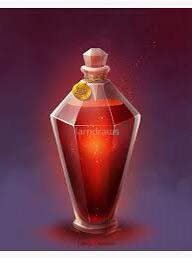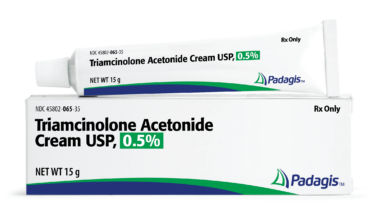The Ultimate Guide to Healing Potion 5e in D&D: Uses, Crafting, and Maximizing Potential 2024

Introduction to Healing Potion 5e
Healing Potion 5e is among the most essential items in Dungeons & Dragons (D&D), especially within the fifth edition. This magical potion has become the go-to item for players who need an emergency health boost during dangerous encounters. In D&D, where character survival depends heavily on timing and strategy, the healing potion 5e is indispensable.
This article dives deep into the world of the healing potion 5e, exploring its nuances, crafting techniques, and different ways it can enhance a character’s gameplay experience. Whether you’re a new player or a seasoned Dungeon Master (DM), understanding how to use and optimize this potion can add depth and excitement to your campaigns. Let’s get into everything you need to know about healing potion 5e and why it’s such a valuable asset in D&D.
Understanding the Mechanics of Healing Potion 5e
The healing potion 5e is designed with specific mechanics that make it straightforward yet powerful. By consuming the potion, a character can regain a certain amount of hit points, which varies depending on the potion’s type and potency. The basic healing potion 5e restores solid 2d4 + 2 hit points, making it ideal for low-level characters or for use in situations where a moderate health boost is needed.
Rolling for Hit Points
In D&D 5e, healing effects are often determined by rolling dice. For a standard healing potion 5e, players roll 2d4 (two four-sided dice) and add 2 to the total result. This mechanic keeps each use unique, which adds an element of suspense. While there’s always a chance for a lower roll, higher rolls can significantly aid characters in need, especially when they’re caught off guard in battle.
Using Actions to Consume Potions
The rules state that drinking a healing potion in combat requires an action, meaning a player sacrifices their attack or spellcasting opportunity for that round. This trade-off adds a strategic layer to the healing potion 5e usage. Timing becomes everything, as players must decide whether to heal up or continue fighting. It’s essential to know how to balance healing with offensive moves, especially in tough combat scenarios.
Potion Effect Duration and Limitations

Unlike spells that can last for rounds or even minutes, healing potions offer instant effects upon consumption. This immediacy makes healing potion 5e a clutch tool for last-minute saves but also means it has a one-time use. Understanding this limitation is critical for managing resources in the game, as players will often be limited by how many potions they can carry or find.
Types of Healing Potions in D&D 5e
In D&D, there are multiple types of healing potions, each varying in potency and cost. From the basic healing potion to the rare and powerful Superior and Supreme potions, understanding these variations can help players make strategic choices.
Standard Healing Potion
The standard healing potion 5e is the most common variety, easily accessible for lower-level adventurers. It restores 2d4 + 2 hit points and is often found in shops or as loot. It’s affordable and straightforward, making it a favorite among beginners.
Greater Healing Potion
The Greater Healing Potion provides a much stronger boost, restoring 4d4 + 4 hit points. This variety is more expensive but worth the investment, especially for characters who often find themselves in intense battles. It’s recommended for adventurers who face higher-stakes encounters or are moving up the character levels.
Superior and Supreme Healing Potions
For adventurers at higher levels, the Superior and Supreme Healing Potions deliver unparalleled support. The Superior variety restores 8d4 + 8 hit points, while the Supreme Healing Potion heals an impressive 10d4 + 20 hit points. These potions are typically rare, expensive, and sometimes only found in treasure hoards or high-tier magical shops. However, the high price and rarity are justified by the near-life-saving effects they provide.
Crafting a Healing Potion 5e: Requirements and Ingredients
Many players find crafting to be a rewarding aspect of D&D, and creating a healing potion 5e is no exception. Crafting allows players to become self-sufficient, reducing reliance on stores and potentially saving gold.
Basic Ingredients and Tools
To craft a healing potion 5e, players generally need a herbalism kit and specific ingredients like rare herbs, magic water, or sometimes a drop of the brewer’s blood. The ingredients can vary based on the DM’s setting, but commonly used components include fresh medicinal herbs and enchanted water.
Skill and Magic Requirements
Crafting potions isn’t just about materials; it requires proficiency in either the Herbalism Kit or Alchemist’s Supplies. A DM might also impose an Arcana or Nature check to ensure the player knows how to successfully brew a healing potion 5e. For high-level potions, magical skills or a spellcaster’s assistance might be required to imbue the potion with its full potential.
Time and Costs Involved
The crafting time and cost can vary, often depending on the potion’s potency. Basic healing potions might take a few hours or even a day to craft, while higher-level potions could require several days or rare ingredients, making crafting a valuable but time-intensive endeavor.
Using Healing Potion 5e Effectively in Gameplay
While it’s tempting to use a healing potion 5e as soon as health dips, experienced players know it’s wise to save these potions for critical moments. Timing and efficient use of potions can make a significant difference in campaign outcomes.
Prioritizing When to Use Potions
One of the best times to use a healing potion 5e is during intense fights when a character drops to low hit points. Knowing when to heal can prevent a party wipe or ensure a critical character, like the healer or tank, stays in the fight.
Sharing Potions Among Party Members

Since potions are consumable items, teamwork and coordination are key. High-level adventurers often pool their resources, ensuring that each member has at least one healing potion 5e. This way, even if a healer is down or unable to reach a fallen member, other players can help stabilize each other.
Maximizing Action Economy
In D&D, the action economy is everything. Sometimes, using an action to heal can disrupt an otherwise smooth combat round. Deciding when and who should take that action to heal can make or break a fight. Many parties develop systems, like designating a “potion distributor,” to streamline healing and save actions for other important moves.
Healing Potion 5e and Character Classes
Healing potions are valuable for every class, but the way each class benefits from them can differ based on abilities, role in the party, and combat style.
Healing Potions for Fighters and Barbarians
For frontline characters like fighters and barbarians, healing potion 5e offers a lifeline when they’re deep in battle. These classes are usually responsible for drawing enemy fire, so having easy access to healing potions allows them to sustain more damage and keep enemies focused away from more vulnerable characters.
Rogues and Rangers: Staying Agile with Potions
For rogues and rangers, who often rely on agility and dexterity to avoid hits, healing potions are more of a backup plan. These classes aren’t meant to absorb too much damage, so they might use healing potions sparingly but will often carry one or two for emergencies.
Spellcasters and Healing Potions
Spellcasters like wizards and sorcerers have fewer hit points and often stay out of direct combat, but a well-timed healing potion 5e can mean survival if enemies get too close. These classes often prefer to save their spells for offense or support rather than healing, making potions a valuable alternative for emergencies.
How to Purchase Healing Potion 5e in D&D
In the world of D&D, healing potions aren’t always readily available. Characters may need to venture into shops, negotiate with traders, or even embark on quests to obtain them.
Potion Shops and Magic Item Vendors
Most towns in D&D campaigns have a magic shop or an apothecary where healing potion 5e can be purchased. Prices vary by region and vendor, but the standard price for a basic healing potion is usually around 50 gold pieces. Higher-level potions like Greater or Superior potions cost significantly more.
Haggling and Bargaining for Better Prices
In some campaigns, DMs allow players to negotiate for better prices on healing potions. Players who are proficient in Persuasion or have a charismatic character may find that they can secure discounts or even make a trade.
Quests and Potions as Rewards
D&D often involves quests that offer magical items or potions as rewards. Sometimes, instead of spending gold, players can earn healing potions by completing tasks or assisting NPCs.



